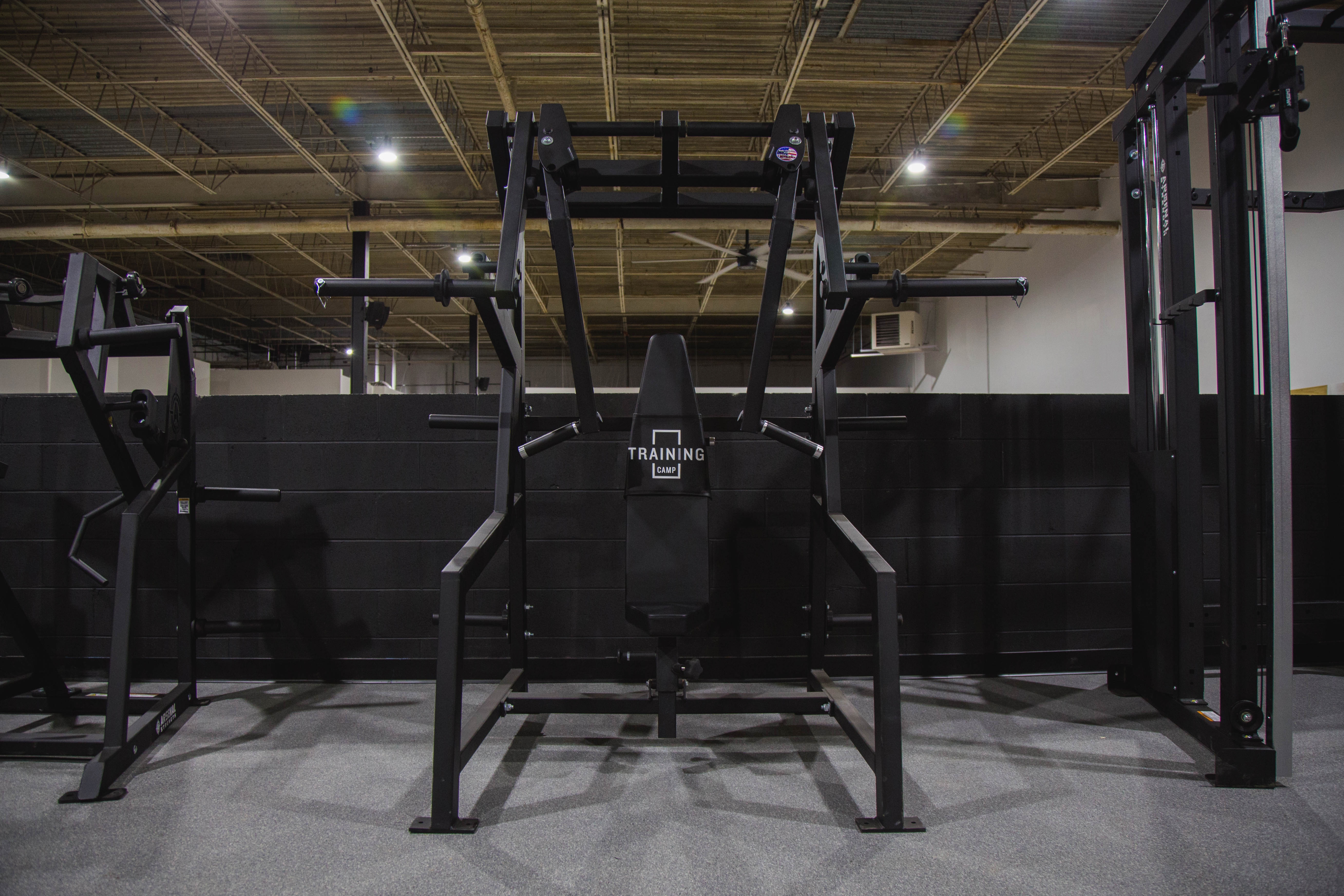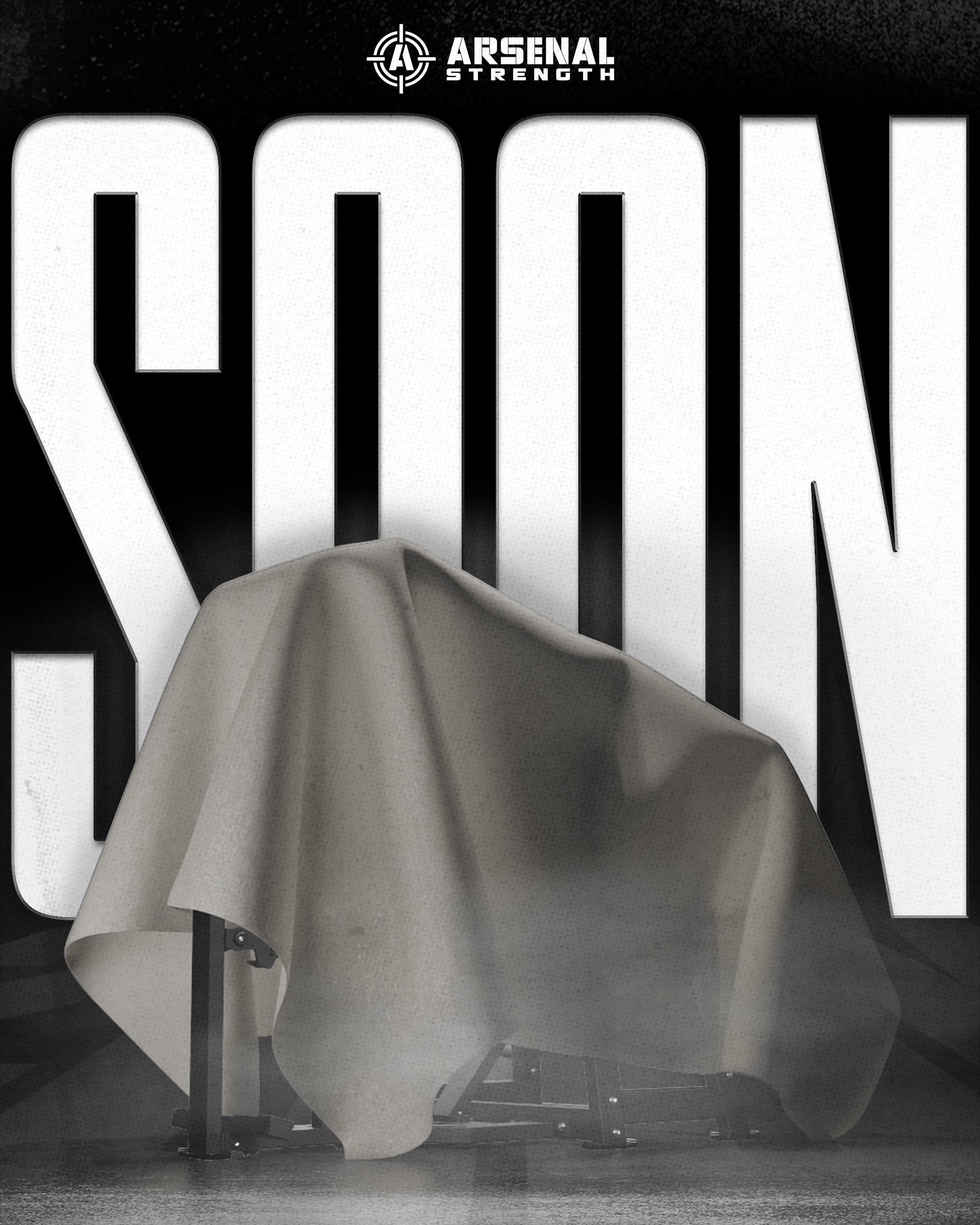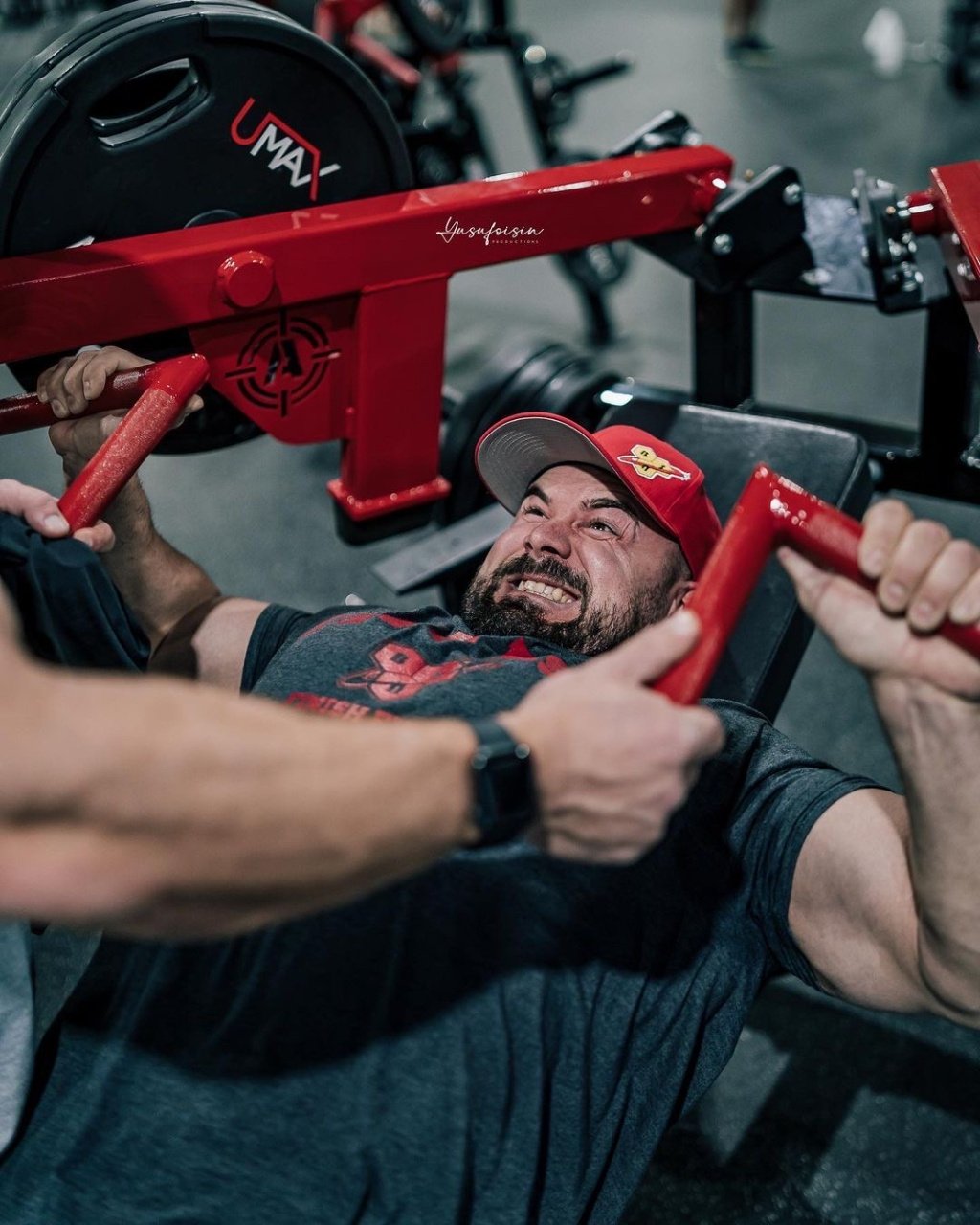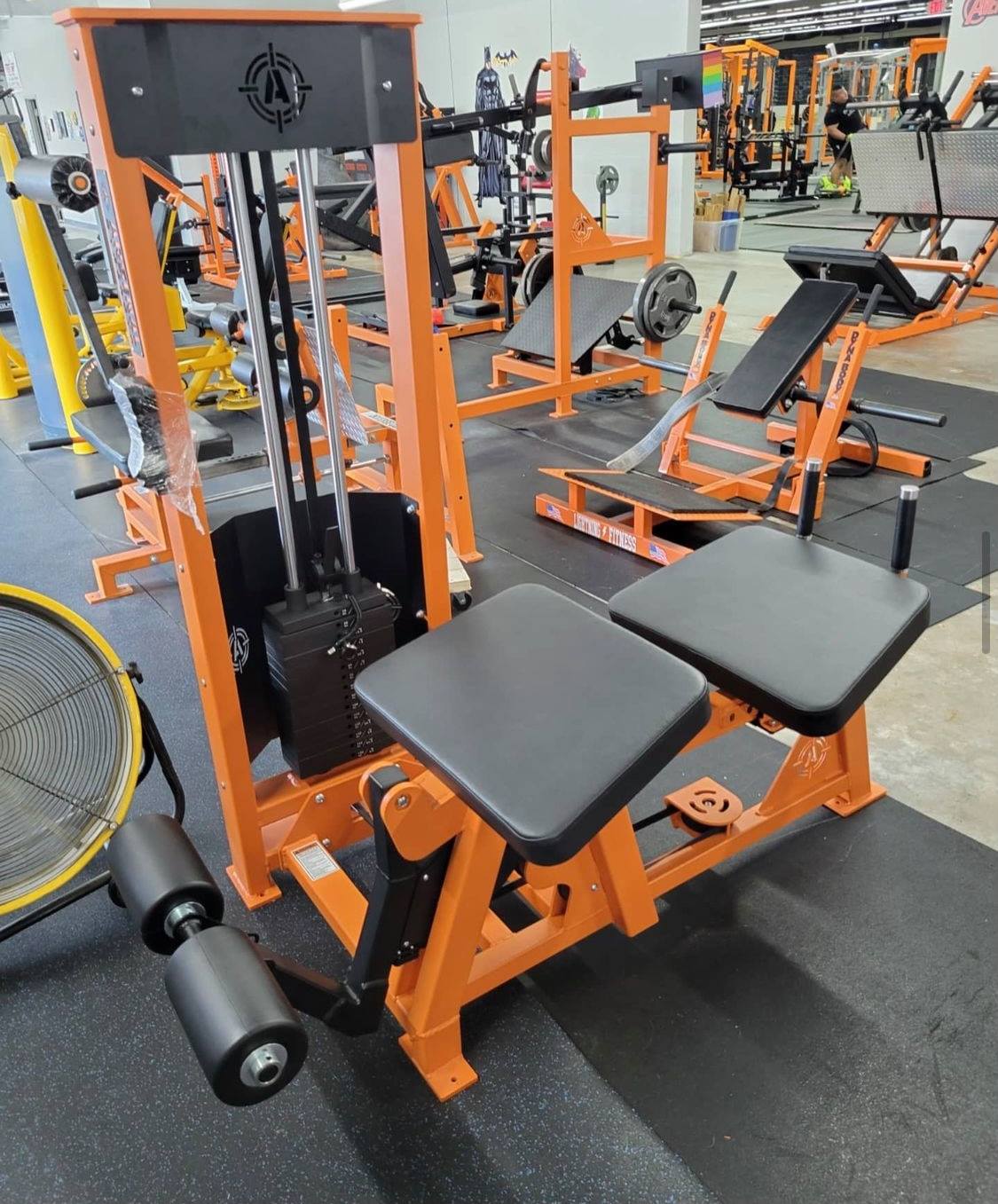Master the Arsenal Reloaded Vertical Chest Press Machine for Optimal Upper Body Strength
Do you dream of developing a powerful and sculpted upper body? The vertical chest press machine is your secret weapon. This versatile piece of gym equipment is designed to enhance your pectoral strength, build muscle, and improve your overall workout performance. Get ready to transform your fitness journey as we delve into mastering the chest press machine.
Key Takeaways:
- Master the Chest Press Machine for optimal upper body strength by understanding its components, proper technique and progression strategies.
- Avoid common mistakes such as incorrect seat height, overextending arms and inadequate control/speed when using the machine.
- Integrate complementary exercises like pushups & flyes into your workout routine to maximize chest development with full or upper body workouts.
Understanding the Chest Press Machine
The chest press machine is a powerhouse in the realm of upper body strength training. This underrated yet versatile equipment is perfectly geared for the confident lifting of heavy weights without the need for a spotter, making it an ideal choice for experienced lifters, bodybuilders, and athletes who are no strangers to free-weight exercises.
The machine primarily targets your pectoral muscles, specifically the pectoralis major, along with engaging the same muscles as the bench press, such as the biceps, deltoids, and latissimus dorsi. It provides an extended range of motion that corresponds to the chest fibers, promoting superior muscle growth.
Components of the Chest Press Machine
Several components make up the chest press machine, each having a significant role in the exercise. The seat ensures stability and support, fostering the right posture and alignment for efficient muscle engagement. The handles provide a solid grip, allowing for better control when exerting force and engaging your upper body muscles such as the pectorals, triceps, and deltoids.
The moderate weight stack, another pivotal component, allows users to conveniently modify resistance, customize workout intensity, and gradually target muscles.
Types of Chest Press Machines
Various kinds of chest press machines exist, each with its unique benefits. The incline chest press machine biases the upper chest more than the traditional press machine due to the different movement arm path.
The Smith machine chest press is a blend of a chest press machine and a barbell bench press, but without the variable resistance patterns of lever- or cam-based press machines.
The Single-Arm Seated Chest Press is a variation that involves pressing one arm at a time, facilitating targeted strength development and muscle engagement on each side of the chest.
Proper Technique for Using the Chest Press Machine
Despite being incredibly effective, the chest press machine necessitates a precise technique for optimal benefits. To use the machine correctly, follow these steps:
- Customize the machine to accommodate your torso and arm length.
- Configure the levers to avoid overextension of the elbows and shoulders.
- Ensure the handles are situated at a lower chest level, approximately at nipple-height.
By following these steps, you can ensure that you are using the chest press machine correctly and maximizing its benefits.
The optimal starting position involves:
- Being seated with a slight arch in your spine
- Head against the headrest
- Shoulder blades retracted against the backrest
- Glutes secure on the seat
- Feet on the floor
- Hands fully gripped around the handles.
Adjusting the Seat and Backrest
One of the initial steps when setting up the chest press machine is properly adjusting the seat and backrest. The seat position that maximizes a comfortable range of motion depends on personal preference, injury history, and individual anatomy. For a ‘flat bench’ technique, position the handles slightly lower than usual.
When adjusting the seat for an incline chest press machine, the handles should be positioned midway between the mid-chest and collarbones. The fore-aft position of the backrest can be adjusted as per your comfort and to influence the muscle targeting during the exercise.
Establishing Hand Position and Grip
Successful chest press execution relies heavily on correct hand position and grip. Here are some key points to remember:
- Your shoulders should be positioned approximately one to two inches above the handles.
- Maintain proper posture with your buttocks against the pad and avoid locking your elbows.
- Grasp the handles with a full grip, encircling the handle with your thumb.
- Maintain a neutral wrist position.
The grip width influences the muscles targeted during the chest press. A wider grip activates the chest muscles more, whereas a narrower grip emphasizes the triceps.
Executing the Chest Press Movement
Executing the chest press movement correctly involves following a sequence of steps:
- Begin by sitting with feet firmly on the floor, ensuring that your arms are horizontal when fully extended.
- Arch your middle and upper back as you perform the exercise and ensure to squeeze your shoulder blades together without shrugging upward.
- Perform the exercise with a controlled motion without fully extending your elbows at the end of the movement.
Upon completing a set, follow these steps:
- Place your feet back on the advance pedal if provided.
- Lower your arms to your side.
- Slowly lower the handles back to their resting position. Make sure your glutes remain secure throughout to maintain proper form.
Common Mistakes and How to Avoid Them
The chest press machine, a potent muscle-building tool, can lead to progress hindrance and potential injuries if common mistakes are made. These include incorrect positioning, overextending the arms, and inadequate control and speed.
We will delve into these common mistakes and learn preventive measures.
Incorrect Seat Height
Incorrect seat height is a common mistake that can lead to discomfort and less effective workouts. Adjust the seat such that the handles align with your chest’s middle. The process involves sitting on the machine, grasping the handles, adjusting the seat height so that your hands are in line with your chest, and locking it in place.
An incorrect seat height can lead to joint problems, overuse of specific muscles, and poor form.
Overextending the Arms
Overextension of the arms during the chest press exercise can lead to increased stress on the elbow joint and a higher risk of injury. Signs of overextension include:
- The arms giving out before the chest
- The weight moving away from directly over the elbow
- Tenderness or weakness in the shoulders
- Unusual ‘crackling’ or ‘grinding’ noises in the shoulders
If you experience any of these signs, it is important to adjust your form and technique to prevent injury.
To maintain proper arm alignment during the press, follow these guidelines:
- Keep the forearms vertical with the elbows directly under the wrists at the bottom of the press
- Maintain a neutral wrist position
- Keep the elbows close to the sides
Following these tips will help you maintain proper form and prevent injury, ensuring you won’t need to visit a physical therapist.
Inadequate Control and Speed
Control and correct speed during the chest press movement are vital for effective muscle activation and injury prevention. Tempo significantly contributes to muscle building, strength improvement, and fat loss.
The speed for chest press exercises is generally around 1 meter per second, and it’s crucial to sustain a consistent pace and refrain from pausing at the apex of the movement.
Progression Strategies for the Chest Press Machine
In any workout routine, progression paves the way for continuous improvement. With the chest press machine, you can employ various strategies such as:
- Adding weight
- Increasing repetitions
- Incorporating tempo and pauses
- Performing supersets and drop sets
These strategies will help you maximize your chest press workouts and achieve better results.
Let’s explore these progression strategies in more detail
Adding Weight and Repetitions
Increasing the weight and repetitions is among the most effective progression strategies. Beginners may start with 50-70% of their body weight, while intermediate and advanced individuals may aim for 85-100% and 100% of their body weight, respectively. The weight should be adjusted by selecting the desired weight plates, finding and inserting the weight pin into the desired plate or stack position, and ensuring it is secure.
The frequency of increasing repetitions depends on the desired intensity and training objectives.
Incorporating Tempo and Pauses
Adding tempo changes and pauses to your chest press exercise can intensify and challenge your routine. Different tempo variations can enhance muscle activation in distinct areas of the chest, thereby enhancing muscle strength and power.
One effective way to integrate pauses into the chest press exercise is by using the pause bench press technique.
Supersets and Drop Sets
Supersets and drop sets are powerful techniques that can maximize muscle fatigue and growth. A superset involves performing two exercises consecutively without resting in between, which can be for the same or different muscle groups. A drop set involves starting with an exercise to failure, then immediately reducing the weight and continuing with more reps.
These methods can aid in overcoming workout plateaus, expediting fat loss, and improving overall strength.
Complementary Exercises for Chest Development
Pairing the chest press machine with other exercises is vital for comprehensive chest development. Complementary exercises such as:
- push-ups
- dumbbell press (fly)
- cable cross-over
- reverse-grip bench press
- Smith-machine slight incline press
A well-designed chest workout can enhance your chest workouts, targeting various muscles in the chest.
Dumbbell and Barbell Bench Press
The dumbbell and barbell bench presses are classic exercises that primarily target the following muscles:
- Shoulders
- Triceps
- Forearms
- Lats
- Pecs
- Traps
- Rhomboids
These exercises complement the chest press machine, providing a comprehensive upper body workout.
The correct technique for these exercises involves lying on the bench with feet flat and gripping the bar slightly wider than shoulder-width.
Push-Ups and Variations
Push-ups are a fundamental bodyweight exercise that targets the following muscle groups:
- Chest
- Shoulders
- Triceps
- Core
- Back
- Legs
Variations such as TRX push-ups, plyo push-ups, and diamond push-ups can enhance muscle activation in distinct areas of the chest, thereby enhancing muscle strength and power.
Cable Crossovers and Flyes
Cable crossovers and flyes are designed to specifically target the pectoral muscles. Along with the chest, they also engage the:
- biceps
- triceps
- abdominals
- deltoids
This makes them a highly effective compound movement, engaging various muscle fibers through the pressing motion.
Different variations of cable crossovers target different areas of the chest muscles, contributing to comprehensive chest development.
Integrating the Chest Press Machine into Your Workout Routine
Appropriate incorporation of the chest press machine into your workout routine can expedite your fitness goal attainment. This exercise can be seamlessly integrated into different types of training splits. It can serve as the primary focus on ‘chest day’ or as part of a ‘push day’ in a push/pull/legs split, as well as being incorporated into upper body or full-body routines.
Chest-Focused Workouts
Including the chest press machine in a chest-focused workout can boost your muscle growth. It is recommended to start with the chest press machine and perform 2-4 sets of 5-10 reps with a challenging weight.
The frequency for incorporating the chest press machine into a chest-focused workout is recommended to be 2-3 times a week.
Upper Body and Full-Body Workouts
Inclusion of the chest press machine in upper body and full-body workout routines can result in balanced muscle development. It is advisable to include it after performing compound exercises like squats or deadlifts.
Following the use of the chest press machine, it is beneficial to engage in exercises that target other upper body muscles.
Mastering the chest press machine is an excellent way to build upper body strength and sculpt your chest muscles. By understanding the machine, using proper technique, avoiding common mistakes, and utilizing effective progression strategies, you can take your workouts to the next level. Remember to complement the chest press machine with other exercises for a well-rounded chest development and integrate it effectively into your workout routine.
Frequently Asked Questions
Is the chest press machine effective?
Machine chest presses are great for muscle growth, however they are not as effective for increasing strength. Aim for 8-15 reps and use other advanced techniques for further promoting hypertrophy.
Is the chest press machine the same as dumbbell press?
No, chest press machine is not the same as dumbbell press as the former offers a much more controlled movement, allowing for isolated muscle focus and greater benefits during each rep.
Is a chest press machine better for upper or lower chest?
A chest press machine is best for targeting the upper chest when using an upwards motion, the mid chest when pushing forward, and the lower chest when pushing downwards. Other exercises can also be used to target these muscles.
How much should I lift on chest press machine?
Start with 25% of your body weight on the chest press machine and increase 5-10lbs every set until you find a challenging weight that allows for 10 repetitions. Utilize your legs to push out the foot advance pedal.
What muscles does the chest press machine target?
The chest press machine targets the pectoralis major and engages other muscles like the biceps, deltoids, and latissimus dorsi.






